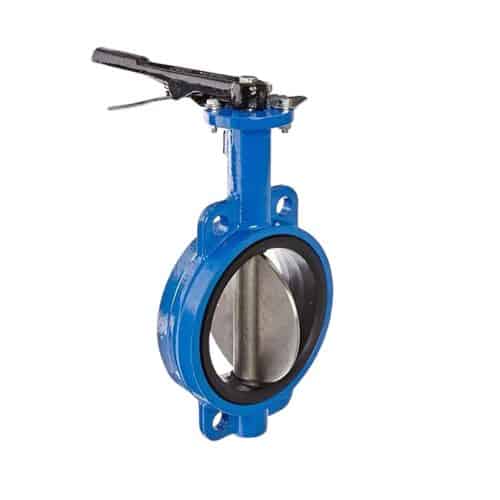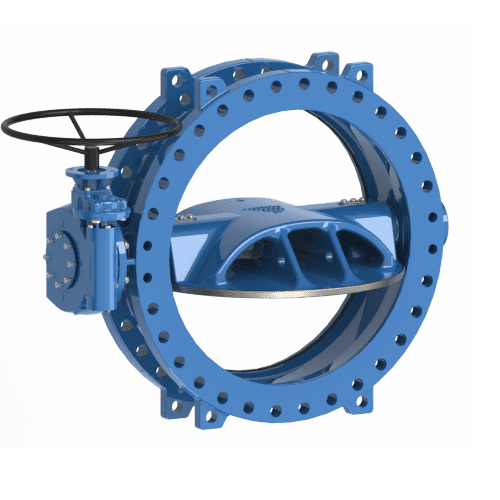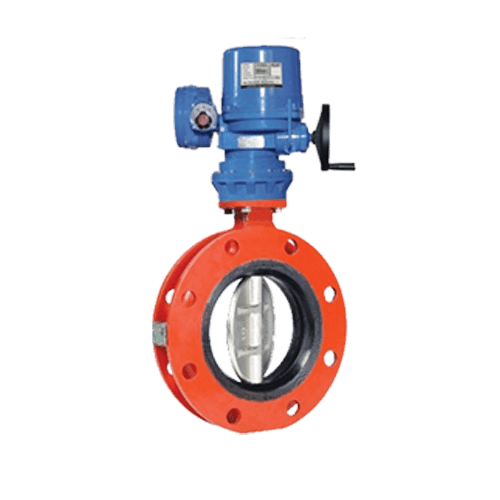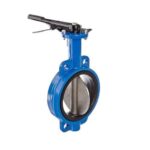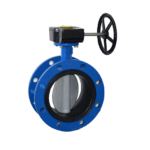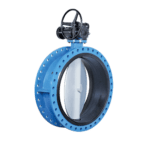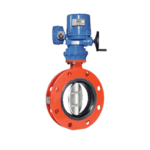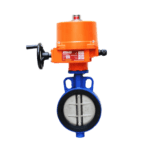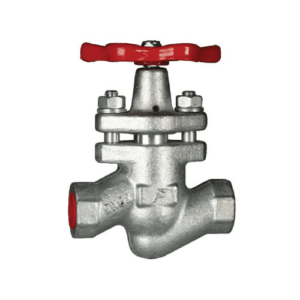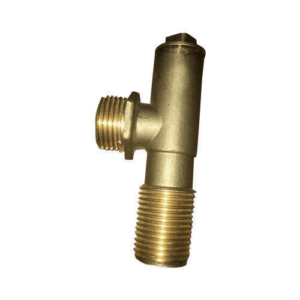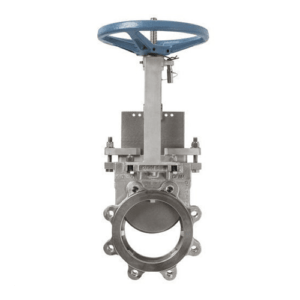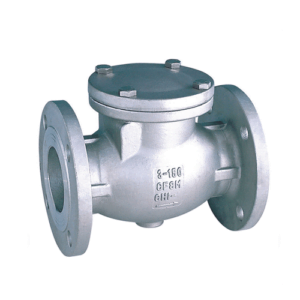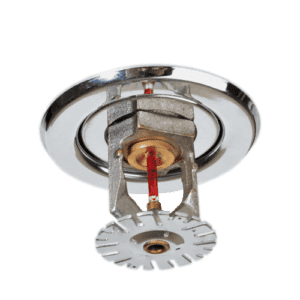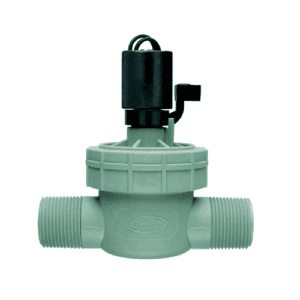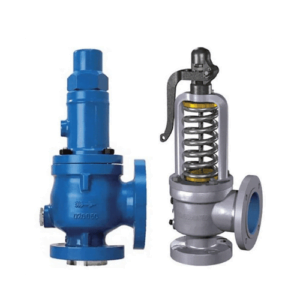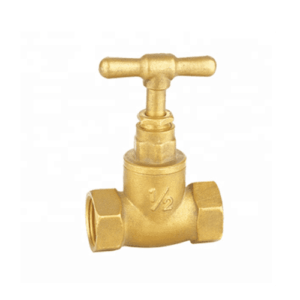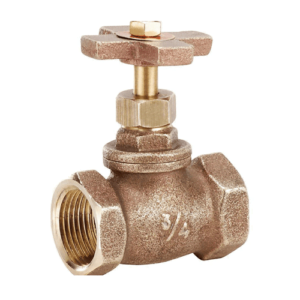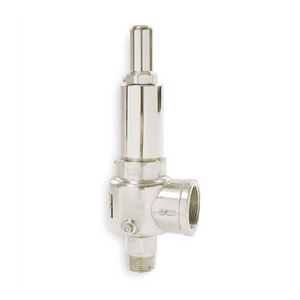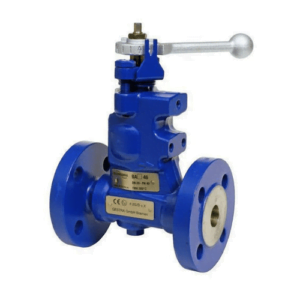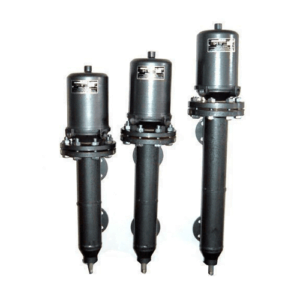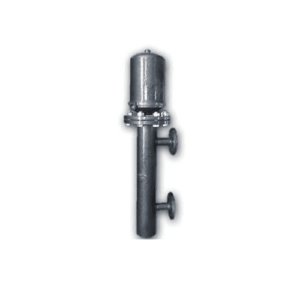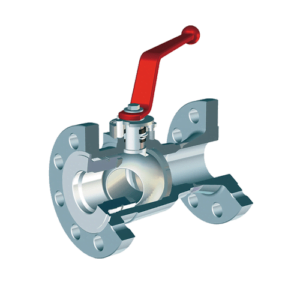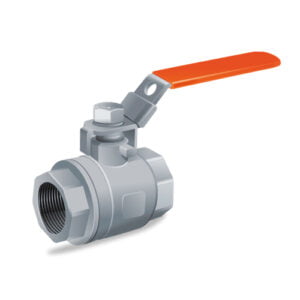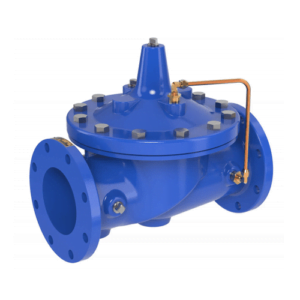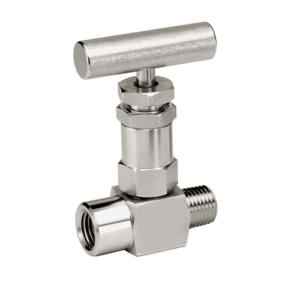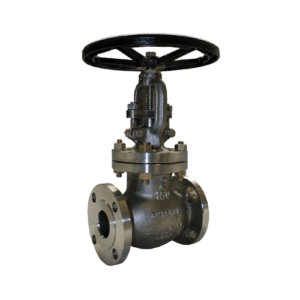Components of the butterfly valve
The body
The butterfly valve body fits between the two pipe flanges. There are majorly 4 types of the body used for butterfly valve
- Lug type body
This is called lug body because it has bulged lugs that provide bolt holes matching those in the pipe flange. They connect pipes via lug holes on the external part of the valve. Here the two bolts could be attached without using a nut. This also provides easy alignment oftwo flanges during installation. They could also be used wherein maintenance or disengaging of pipe could be done without removing the whole valve connection. They are used for chemical industries majorly wherein they could withstand a temperature up to 200 degrees Celsius. They are usually more expensive in all the 4 types.
- Wafer type body
The wafer-type body has bolts connected to pipes that go throughout the valve body. They are sandwiched between the flanges. They do not have bulging bodies. The main aim of wafer type body valve is to maintain a positive pressure or unidirectional pressure. Wafer type body has a flexible seal that protects it from the backflow of fluid in bi-directional force. They are very economical and easy to install but they are not effective in aligning the flanges.
- Double flanged body
A double flanged body has a flanged body with raised rims which allows the installation of two flanged pipes with the same diameter as the valve. They are heavy and rigid comparing other types which could be used as an advantage. They do the function of controlling, regulating, and throttling flow. They have one of the most flexible seats which helps them in carrying out the dead-end services. They could perform as shut of the valve by installing of a gear. They are suitable for heavy-duty industries and large flow handling scenario
- Butt-welded body type
The butt welded butterfly valves the name itself suggests that the valves are directly welded in the pipeline. They have a triple offset structure. Often used for high temperature and high pressure. They are very favored in the industrial sector, especially in the mining industries.
| Name | advantages | disadvantages |
| Lug type body |
|
|
| Wafer style body |
|
|
| Double flanged body |
|
|
|
|
|
Disc
Discs are the part of butterfly valves that control the fluid flow through the valves. They could function as the gate which stops the fluid or which that allows the passing of fluid. They are present in all types of butterfly valves. The classification of butterfly valves based on disc type used could be of 4 types
- Concentric disc
The design of concentric design is made such that the steam passes through the centerline. They are usually used for low-pressure applications. It has a more simple structure than an eccentric disc. They are also called zero offset or resilient seated because the seat is made up of rubber which makes it more flexible to seal when it is closed. They come first into contact with a seat around 85 to 90 degrees.
- Eccentric disc
It is exactly the opposite of the concentric design here thestem runs behind the center line in the opposite direction. The main purpose of such discs is to prevent the junction of the disc with a seal before the closing of the valve. This helps in improving the life of valves. This is also called a single offset. Nowadays it has given an emergence to double and triple offset discs too.
- Double offset butterfly valve
In a double offset, the stem is located behind the disc with an additional offset to one side.A cam-action occurs from the stem being behind the disc as it rubs against the during rotation at 90° for the first 10 degrees of opening, but also the 10 degrees of closing. They are one of the types of high-performance valves that can handle pressure up to 1400 PSI and temperature up to 650 degrees Celsius. they are used in petrochemical industries, mining industries, atomic industries, etc.
- Triple offset butterfly valve
The triple offset disc has a very similar function to that of a double offset butterfly valve but it has one offset extra than it.The triple offset valve consists of two offsets situated in the center, but with a third offset having cam action with right-angled conical sealing. They tend to be working in pressure up to 1480 Psi and could resist temperature up to 650 degrees Celsius. They have wide usage of the application and they are the most advanced type amongst the all these with very less emersion. They are also one of the high-performance valves.
Stem
The stem is the part of the valve which connects the body of the valve to the staff. this is very small in size but yet plays a major role in the working of the valve. Without it, the functioning of the valve would not take place. The protection of stem could be classified into two types
- Wetted design
- The material used here does not provide corrosion and erosion-free stem due to which they get damaged easily.
- Non-wetted design
The material used here makes the stem corrosion and erosion-free.
Seat
The seat helps the valve to create a sealing effect. They run in the inner diameter of the valve. They press against the discs of the valve which collides and creates a sealing effect. They are made up of materials such as elastomers or polymers. Such material provides in carrying out better-sealing effect. They could be used either by bonding it to the body or by locking it down to it. The following are types of butterfly valves based on seat material
- Soft seated
Here there is the usage of soft metals which do not have that high-pressure resistance or temperature resistance. They are generally used for low torque applications. Examples such asPolytetrafluoroethylene (PTFE) or commonly known as Teflon with the temperature resistance range from -73 degrees Celsius to 233 degrees Celsius.
Another example is Reinforced Polytetrafluoroethylene (RTFE) or reinforced PFTE or reinforced Teflon is a valve seat material that is blended with filler compounds to provide additional compressive strength and prevent abrasive wear. It also has a low frictional coefficient that makes it resistant to abrasive wear. They have more temperature resistance than the PTPE. They have temperature ranges from -196 degrees Celsius to 233 degrees Celsius
- Metal seated
They are made up of heavy metals which generally have high pressure and temperature resistance capacities. They are used in heavy industries wherein it has to also deal with bulkier fluids. For example the usage of stainless steel or Inconel seats.
Types of butterfly valves of the basis of material used
- PVC(polyvinyl chloride)
They are one of the most common types of plastic materials used for making butterfly valves. They are used wherein working with low temperature is required with low pressure. They are lightweight and also inexpensive. They arewidely used as they give a good sealing effect with a minimal cost, they are also not that reactive to chemicals.
- Cast iron
Cast iron Is an alloy of carbon and iron they are a good option when than PVC as they have more tolerance capacity. They are the cheapest in the metal category, but this does not make them ineffective. They are very versatile plus they are also cost-effective. Due to which they are widely used in industries.
- Stainless steel
the stainless steel material is a combination of iron, nickel, chrome (10.5%), and sometimes Molybdenum, it possesses both strong acid endurance and strength of steel. They have great pressure and temperature resistance. They are generally used in heavy industries wherein there is the requirement of high torque. They are expensive compared to cast iron.
- Hastelloy or nickel alloys
This is made up of an alloy of nickel. They are generally used in high torque applications wherein there is a requirement to deal with the high pressure and temperature of the fluid. They are considered to be one of the strongest and versatile types of butterfly valves. They are highly recommended for corrosive fluids which could not be barred by any other metals such as stainless steel. they are often used in the construction of valves. But one of the major drawbacks here is the weight and the price. They are a lot more expensive than stainless steel and they are also heavier which restricts their use in some applications.
- Duplex stainless steel
Duplex stainless steel is a mixture of austenitic steel and ferric steel. they both are comprised of an equal ratio of austenite and ferrite for the making of duplex stainless steel. The main aim behind this was to give high strength like ferrite steel and toughness like austenite steel. they are usually used in applications wherein high torque is required.
- Actuation
This means the method which could be used for the functioning of the valve. This could be classified into various types as follows
- Manually operated
Here the butterfly valves are operated manually by gear or hand levers. They are very cost-effective but they are less productive compared to the electrically or hydraulic actuation.
- Electrically operated
Here the functioning or working of valves takes place electrically by use of various external sources such as a generator or an electric motor thus they are also termed to be called motor operated.
- Pneumatic operated
Here the work takes place by using compressed air as a mode of energy. These could be operated in both ways automatically or semi-automatically.
- Hydraulic operatic
The working takes place by the usage of hydraulic pressure that is the force generated by water. Hydraulic actuators could be operated automatically or semi-automatically.
- Working principle of the butterfly valve
The working is carried out majorly four parts of the butterfly valve that is the body, stem, seat, and disc. The functioning is very simple the body or the housing assembly covers all the internal parts of valves. Then comes the disc, the disc moves partially or creates a quarterback movement that is the 90 degrees movement to open or close the valve. This is one of the most primary body parts as it plays a major role in the movement of the fluid inside the valve
Then comes the seats they are set in such a way that is pressed up with the discs to press each other and create a sealing effect. The stem works as the linking device between the discs and actuator, with the help of actuators the valve is operated.
So taking an example as when fluid enters a valve. The handle of the valve makes a quarterback turn which either allows or restricts the pathway of fluid. if the handle is parallel to the pipe, it shows that the valve is in on position. When the handle is perpendicular to the pipe it shows that the valve is not operating. The amount of fluid passing through could be identified from the angle created by the discs with the reference with the centerline. The fluid is protected inside by the pressure created between the discs and seat which helps it from leaking out and creating a sealing effect.
- Selection parameter of choosing a type
The butterfly valves are available in various types and variant in the market. It is suggested that a customer sets in some criteria for selection to avail right product for their requirements.
Specifications
- Body material
- Body type
- End connection type
- Seat material type
- Actuation to be preferred
- Other information
- Pressure ranges
- Temperature ranges
- Flow rate
- Material content
Advantages of butterfly valves
- Lightweight and compact in design
The butterfly valves are very light compared to other types of valves they have a very compact design and face-to-face dimensions due to which they incur less labor cost and installation prices.
- Low maintenance costs
They have a very economical design and have very few moving parts due to which there is a minimal amount of wear and tear. Which results in less maintenance of the valve.
- Swift functioning
The butterfly valves are quarterback valves which means with the rotation of 90 degrees they could easily be made either fully operating or made to shut off. This could be done within seconds. However, in some situations, the speed could be sacrificed due to the usage of various actuation.
- Various uses
The butterfly valves are very versatile in nature due to which they could be used in many places. For example, they could be used in mining industries but also in marine industries underwater.
- Low cost
The butterfly valves have a very simple, compact, and economical design. Thus they are more evident to save costs than other types of valves. The cost-saving could be realized more when you go for purchasing with larger diameters.
- Quick opening and shutting
The butterfly valves have a very fast opening and shutting of the valve. They are proved to be working in low pressure and temperature more efficiently which makes them useful for low tier applications.
- Various actuation
The butterfly valves are very flexible when it comes to the usage of actuators they could be operated manually by a hand lever, electrically by motors, pneumatic forces could be used for operation, and hydraulic pressure that is functioning with the help of water pressure.
Disadvantages of butterfly valves
- Disc movement is affected by the flow turbulence
- Pooling sealing function
- Throttling services is limited to the flow pressure
- Not suitable with high pressure and temperature
Applications
- Chemical industries
- Mining industries
- Vacuum services
- Use for gases and compressed gas industries
- Cooling down of water
High-Performance Wafer Type Butterfly Valve for Industrial Applications
Butterfly valve is versatile in applications and one of the primary piping components that act as a regulator in both flow and pressure. This valve’s utilization is most preferred in water treatment, chemical processing, and HVAC systems. The triple offset butterfly valve is highly valued because this type can function with high pressure without too much wear and leakage.
Material Specifications:
The valve will serve for a long time since the materials from which it is made are tough, like stainless steel and high-grade alloys. They are selected based on excellent resistance to corrosion as well as other environmental impacts; therefore, they will be the same materials that will go ahead to increase the service life of the valve. It has very compact and efficient designs, thus making it one of the best for places that have available space at a premium.
Technical Specifications:
The Butterfly Valves are designed in sizes from 2 inches to 48 inches, which are very versatile in many applications of the piping systems. The said valves are capable of being designed to function at a maximum of 250 PSI and at temperatures from -30°C to 200°C. The valves are designed as [Wafer Type Butterfly Valve] and [Pneumatic Butterfly Valve] to meet specific operation needs. The [BF Valve] has an efficient flowing resistance mechanism and is best for high flowing.
Standards and Compliance
The Butterfly Valve conforms to international standards, including ASTM, ISO 9001, and API. One of the best [Butterfly Valves Manufacturer], we ensure that each valve manufactured in our unit conforms to these standards; thereby, through these benchmarks, the buyer is assured of the quality and acceptance of the product in this competitive industry.
Usage Instructions
To provide long service life, maintain your Butterfly Valve properly by inspecting it periodically and replacing the seals. Most important is the installation, to be done by a properly qualified technician so you do not fall into the regular problems of poor alignment or sealing. For general maintenance and troubleshooting, consult the further detailed manual or contact our support department.
Applications
This is a critical component for many processes that require perfect flow control. These valves frequently find use in water and wastewater treatment plants because the fluid flow is controlled with a minimum pressure drop. The [Pneumatic Butterfly Valve] is a quick partner that is good in implementing automated systems with fast response and easy control. The [Wafer Butterfly Valve] is a versatile valve liked because it can easily be fitted between flanges in conditions where space is limited.
Features and Benefits
Features:
- The close dimensions of the [Wafer Butterfly Valve] allow it to be installed and maintained in extremely constricted spaces.
- The [BF Valve] model is strong and can withstand pressure and temperature fluctuations.
- As a result of this demand for operational specificity, it has become necessary for [butterfly valve manufacturers] to offer customized options.
Benefits:
- This implies a sustained, secure reliability over time, with little expense incurred by recurring replacement and maintenance.
- Its effectiveness in flow moderation and isolation helps save energy and thereby minimizes operational costs.
- Competitive prices on offers for products with butterfly valves to offer cost-effective solutions at the same time not compromising quality for the projects.
Related Products
Consider this other related product to maximize the performance and functionality of your valve systems:
- [Gate Valves]: Applications that require a minimum flow path restriction when the valve is fully open.
- [Globe Valves]: Such valves are used for throttling service in high-pressure services when it is necessary to control the flow with good accuracy.
- [Actuators]: Make [Butterfly Valves] highly functional, especially in automated systems where remote control is very convenient.
Support and Warranty Information
Our [Butterfly Valves], from the leaders in [butterfly valve manufacturing], come supported with the broadest support and warranties available. Thorough installation instructions, unrivaled support during operation, available troubleshooting assistance, and our ability to help ensure your valve is performing perfectly will help you optimize the performance and life of your equipment.

